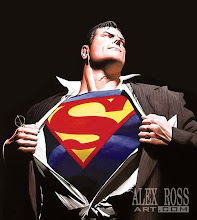When we think of ‘getting in shape’, most of the time, a weight loss or weight management program comes to mind. Following in a close second to weight loss is building stronger muscles, or toning up. One of the elements of physical fitness that often gets overlooked when people begin a new exercise program is flexibility, or the range of motion that is possible around a joint. Flexibility training is often overlooked because it is considered to be too time consuming and unnecessary. However when the negative effects of limited range of motion are compared to the time investment, it can certainly be seen as a worthwhile activity. The longer we take our flexibility for granted, the greater the chance that we will slowly lose much of it.
Although there appears to be a general decline in range of motion about a joint after adulthood is reached, there has been much argument over whether this diminution is due to physiological aging or the decrease in physical activity normally associated with aging. The second theory being the ‘if-you-don’t-use-it-you’ll-lose-it’ theory is rapidly gaining acceptance. At any rate, this decline in range of motion can be directly linked to an increase in several physiological problems. One of these commonly ignored affects is the added force felt by the spine when engaging in higher impact activities such as jogging or aerobic dance. This force would normally be absorbed by the joints distal(or below) the hip. As the muscles tighten up, the “give” normally present in these joints vanishes, forcing the spine to absorb more of the impact, resulting in lower back pain. Muscle injuries, muscle soreness and postural deformities are examples of other symptoms of decreasing flexibility.
To see the affects of extremely limited flexibility, you only have to look as far as a long-term care facility. Residents who aren’t given frequent range of motion or flexibility sessions will often lose the use of the muscle or limb involved. At severely advanced stages, the muscles can tighten up, leaving the resident in a fetal position. Granted, these cases are few in our society today, but it illustrates the importance of retaining the range of motion we already possess.
So now you’re convinced that it might be worth your time to spend a few extra minutes of your workout session in flexibility training, but what should you be doing? First you should realize that there are certain times during your workout that it would be more effective for you to stretch. That’s because when your muscles are cold, they are similar to rubber bands in that when you stretch them, they normally just bounce back to their original shape. That’s called elastic deformation. When you perform a type of dynamic stretching involving bouncy or jerky movements called ballistic stretching, this is normally the type of temporary deformation that takes place. If the momentum of the body becomes too great for the joint’s current range of motion(ROM), you can actually sprain or strain(tear) the muscle. If, however, you increase the core temperature of your body to 102°f, the muscle begins to display characteristics similar to taffy or plastic, for when the muscle is stretched it retains the lengthened shape. This is called plastic deformation. The best type of stretching to achieve permanent or plastic deformation of the muscle is called static stretching. Static stretching typically involves lengthening the muscle to a point of slight discomfort; when this point is reached the position is held for 15 to 30 seconds, and then repeated two or three times. Static stretching has also been proven to cause less muscle soreness then the aforementioned ballistic stretching.
So you know you should be stretching after your body temperature has been raised by some form of aerobic activity. You also know that you should be performing static stretches that are held to the point of slight discomfort for 15 to 30 seconds, and repeat them two to three times. What you want to know is what exactly you should be doing. This is entirely dependent upon the results desired. You must target the muscles you are seeking to improve by imitating the motions you will be doing. This is referred to as training specificity. If you want greater range of motion in the patella/femoral(knee) joint so that you can bend down to better perform your gardening activities, then you should imitate that movement and hold for the required amount of time. If you are interested in improving the flexibility of your lower back in order to help the swing in your golf game, after warming up the muscles, you should imitate the stance you will be using, extending the body as far as you can in the direction you desire, and hold the stretch. It all seems very elementary, but it’s the component of physical fitness we often ignore until we experience a sports related injury.
Flexibility is something we don’t often notice until we start having unexplained pains or problems. Take a few extra minutes after the end of your game or workout and stretch. You may not notice a difference now, but someday your body will thank you!
Subscribe to:
Post Comments (Atom)

No comments:
Post a Comment